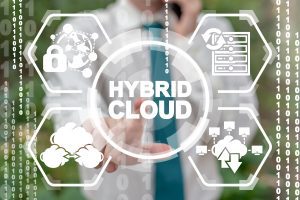What to expect when you’re expecting…. SASE.

According to recent data it is estimated that 76 percent of organizations now support hybrid working. This figure has risen significantly since the beginning of the pandemic, turning most businesses into digital organizations that have employees accessing their networks and carrying out their jobs from locations all over the world.
The benefits of this are endless, not only offering employees more flexibility to work from ‘anywhere’, but businesses are also experiencing cost savings, increased productivity, and the ability to function during the pandemic.
However, as more corporate applications are migrating to the cloud and the networks of organizations are stretching far beyond their traditional perimeter, this means an organization’s network is no longer a single place in point, and external network access becomes both a security and efficiency challenge.
Security has always been focused on building a moat and castle-like infrastructure around an organization’s network, where the crown jewels have been locked away to outsiders. However, the rise in remote working and the wide-scale adoption of the cloud has challenged this. Traditionally to support external network access, organizations would deploy multiple solutions, including Cloud Access Security Brokers (CASB) to access cloud applications and Virtual Private Networks (VPNs) to access corporate networks. However, each tool would be siloed, meaning there was an abundance in products that users would have to navigate across to gain external network access. Not only did this lead to inefficiency, but it was also more costly for the business with added deployment, integrations, plus management challenges and complexities. To combat this challenge a new modern security platform called Secure Access Service Edge (SASE) has been birthed.
What is secure access service edge (SASE)?
Since Gartner first coined the term in their “2021 Roadmap for Secure Access Service Edge (SASE) Convergence” report in March 2021, SASE has been identified as the next transformation of enterprise networking and security. Its architecture has the ability to make better use of existing technologies by converging networking and security domains into a single, global, cloud service. SASE has been labelled as “transformational” and has become more relevant than ever.
In today’s digital world, we are operating faster and more remote than ever before, and SASE has emerged in response to that ongoing trend. The digital business world is all about speed and agility. Pulling teams and resources together regardless of location to develop new products faster, deliver them to the market sooner, and respond to changes in business conditions quicker are all hallmarks of digital business transformation. Technology is essential to support those organizations to keep up with digital transformation but also the widespread adoption of cloud computing.
SASE provides a unified, global, and cloud-based network that supports all edges. SASE describes the convergence of secure access to users and assets in the cloud, while mobile, or at business locations. SASE has been largely driven by cloud adoption and the need for organizations to enable seamless connectivity to employees from all over
the world, thus improving efficiency, introducing cost savings, and increasing security. All while reducing complexity and without the need to hire more employees to maintain and monitor it.
SASE also compliments Zero Trust security policies which are an important area of cyber defences today. With Zero Trust Network Access built-in to a cloud-native network platform, SASE can connect the resources of the modern enterprises — mobile users, sites, cloud applications, and cloud datacentres — with just the right degree of access. Due to its converged nature, SASE security tools can share context and data, providing a holistic view of the threats the organization faces rather than a point solution’s siloed view.
However, before organizations move forward with SASE, there are a number of factors they will need to consider before selecting a provider. What is the scope of the deployment? Who is going to need access to the company’s network? Is it just employees or contractors as well? Will staff be connecting from external locations? The things to consider are:
Scope of deployment
Every SASE provider will advertise they have multiple global points of presence (PoP), but do they provide you with the access you require to provide employees with all the access points they require?
A PoP is where two or more networks share a connection making it possible for distant or remote workers to connect easily over the Internet.
A good SASE provider will offer a global, geographically distributed and service-level agreement (SLA) backed network of PoPs that interconnect with multiple tier-1 carriers to enable a dispersed workforce to be able to conduct everyday tasks effectively.
Evaluate applications
All organizations rely on hundreds of applications every day, but only a handful are critical to the successful running of the business. Before organizations move to SASE, they must evaluate the applications that employees will need to access through the platform.
Future capabilities
When selecting a SASE provider, it is important to find out about the platform’s capabilities and any plans to add further features in the future. Will these help your business, or could they become a problem? Arming yourself with this information will limit the chances of incompatibility problems arising after the SASE deployment.
Making sure you have control.
It is also important to evaluate the connectivity and performance of users, sites, applications and your SASE provider. Does everything connect seamlessly? Do you still have control over networking and security policies?
Adjusting methodologies to get it right
When it comes to deploying SASE, it is critical that organizations carry out their due diligence.
While providing connectivity to external users so they can access corporate resources has been an issue for many years, when doing it through SASE, some of the methodologies and operations will need to be adjusted.
However, once organizations have fully deployed their SASE platform, they will see significant benefits, not only allowing them to be more flexible but also through lower business costs, complexity and risks by connecting network and security into a holistic platform.
